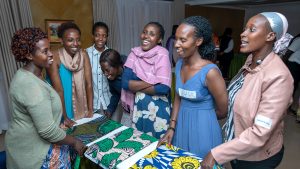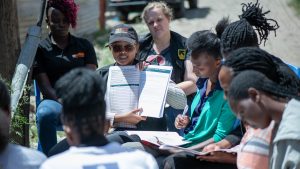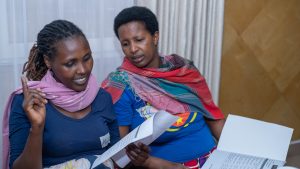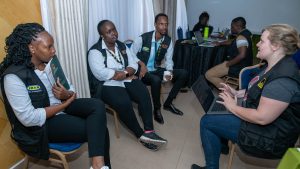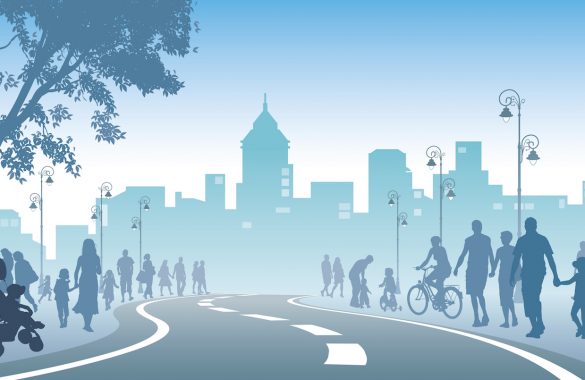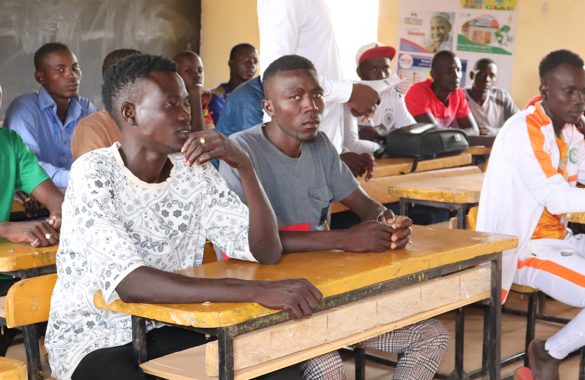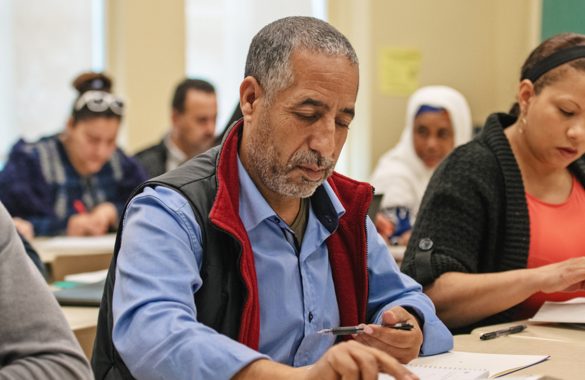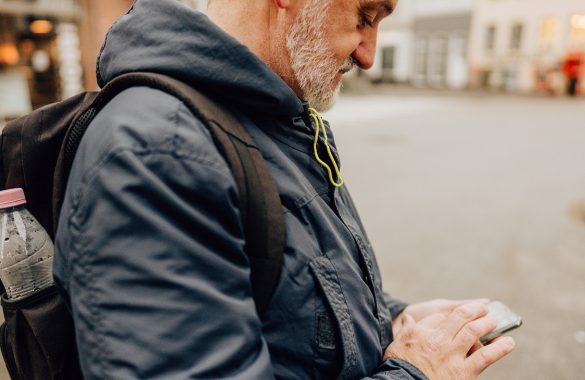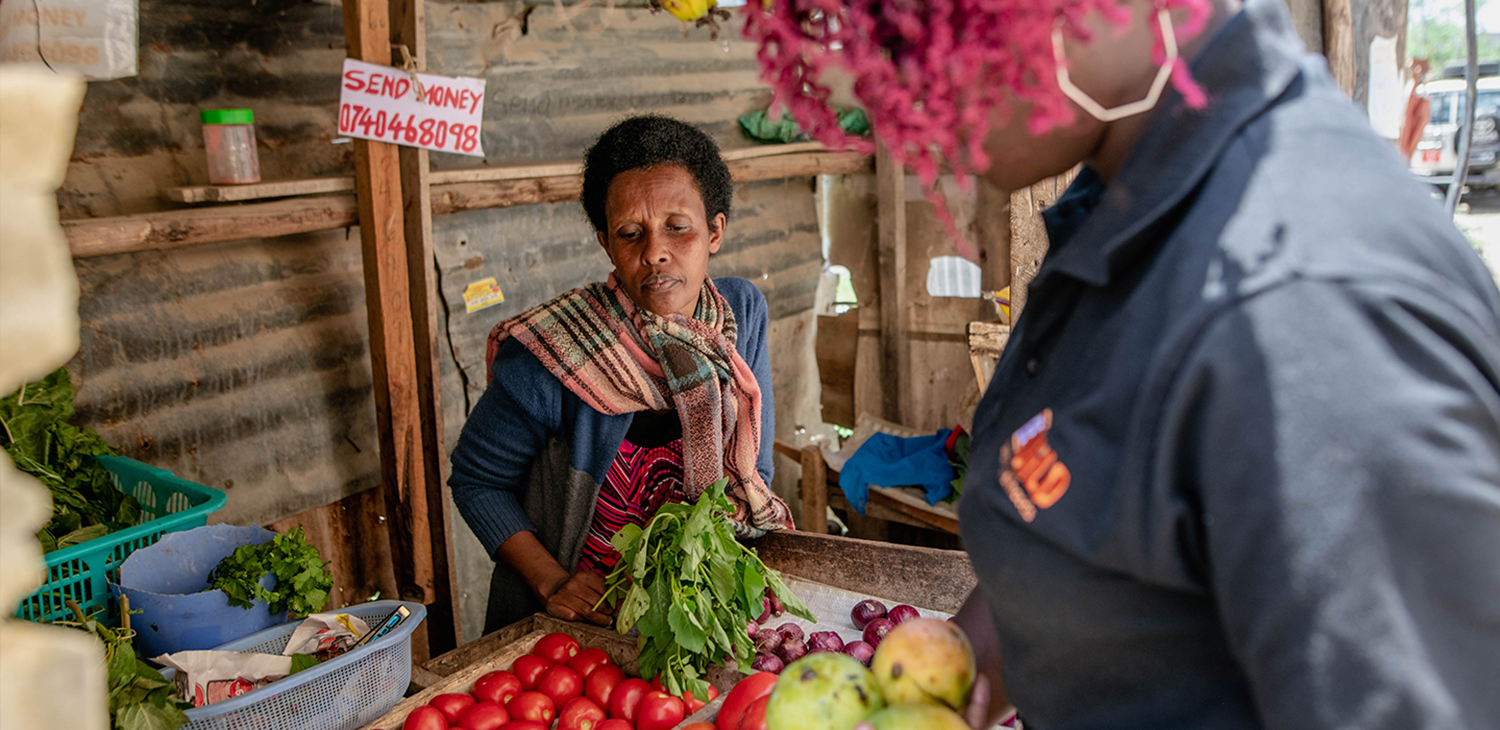
Project Status

Background
Over half of the world’s refugees live in urban areas, predominantly in low- and middle-income countries. Many host governments restrict the ability of refugees to move freely or establish a new life outside designated camps. But even in contexts where refugees enjoy freedom of movement and the right to work, a mix of practical and social barriers often hinder their ability to integrate into local labor markets.
This is the case for the millions of people who have sought refuge in Kenya and Uganda from neighboring countries experiencing conflict, violence, and persecution. Many of these refugees are trapped in situations of protracted displacement, unable to return home or fully integrate into host communities for five or more years. While the two countries rank among the world’s leading hosts for refugees, historically they have offered very different opportunities for integration. Until recently, refugees in Kenya were legally required to live in camps—the largest of which lie hundreds of miles from large urban centers—and bureaucratic hurdles made obtaining identity documents and work permits difficult. Nearly 589,000 refugees live in Kenya today, but less than half of those living in Kenyan cities were engaged in self or wage employment. The Kenyan government’s passage of the new Refugee Act in 2021 promised expanded freedoms and rights for refugees, but precisely how this law will be enacted is still being determined.
Meanwhile, the 1.6 million refugees in Uganda have had the right to work, own businesses, access health care and education, and move freely for over two decades. Under the country’s progressive policies, many refugees have been able to start businesses. But as of 2021, only 42 percent of working-age refugees in Uganda were employed, compared with 69 percent of host community members. Research has found that Ugandan employers are disinclined to hire refugees, often lacking information about their status and right to work. Even when they are employed, on average, refugees earn 32 percent less than host community members with similar skills levels.
The Challenge
In addition to regulatory and administrative barriers, refugees in both Kenya and Uganda face a number of other obstacles to economic and social inclusion. Because gathering formal documentation of education and professional experience during a crisis situation is rarely possible or practical, refugees find themselves unable to demonstrate their qualifications to employers in the host country and often settle for jobs below their skills level. In some cases, differences in language, ethnicity, or religion leads to hostility and discrimination by host communities and abuse by employers or authorities. Further, refugees are at a particular disadvantage due to the nature of the economies they are entering. Most economic activity in Kenya and Uganda falls within the informal sector and most working people are self-employed. In Kenya, 61 percent of the total employed population is self employed, while in Uganda the share is 76 percent. Starting a successful business in such contexts relies heavily on interpersonal relationships and trust. But as newcomers, refugees lack local business and social networks, and with them, potential customers, business partners, information, and financial support.
The Intervention
Project Development
In 2023, IPL partnered with the International Rescue Committee (IRC) and researchers from Makerere University and Georgetown University to explore ways to improve the economic and social inclusion of refugees in Uganda and Kenya. The project is part of Re:BUiLD, a five-year program implemented by IRC with support from the IKEA Foundation that delivers livelihood services to refugees and host communities in Nairobi and Kampala. IPL and Re:BUiLD identified an opportunity to test a novel approach: an intervention aimed at building refugees’ social capital by expanding and diversifying the business networks of refugees and members of their host communities. IPL researchers worked closely with Re:BUiLD to design a randomized control trial (RCT) to measure the impact of a business group program alongside business grants for refugees and host community members in Nairobi and Kampala. The overarching goal of the intervention is to expand and diversify the business networks of entrepreneurs, alongside the provision of cash assistance, with the aims of enhancing self-employment opportunities and fostering social cohesion among urban refugees and vulnerable hosts.
The team designed a pilot of the business group program to test the relevance and operational feasibility of the intervention, solicit feedback on the content of different sessions, and probe their potential efficacy of economic and social outcomes for refugees and host community members alike. After completing the pilots in late 2023, the team led an iterative program and research co-design process over six months, including a weeklong design workshop in Nairobi with IRC in 2024 to incorporate learnings from the pilots and conduct consultations with Re:BUiLD staff, refugee communities, local advocacy organizations, and other stakeholders. New training materials were developed with advice and insight from refugee community leaders to ensure alignment to the needs and concerns of participants. The team then conducted follow-up pilot tests of refined session content, developed program materials, and trained community facilitators to lead the sessions.
Re:BUiLD RCT
In mid-2024, IPL and Re:BUiLD launched the full program RCT. The study randomly assigned participants into two types of business groups: small, fixed business groups that aimed to create “strong” ties through more intimate and repeated interactions between group members, and large, rotating business groups designed to cultivate “weak” ties through less frequent interactions between a larger number of entrepreneurs. The RCT also varied the nationality composition of these groups to explore the impact of forging ties between refugees versus building connections between refugees and hosts.
While there is some research on the importance of business networks on economic success for entrepreneurs and businesses in high-income countries, these insights are not necessarily transferable to refugee contexts in developing countries, where market composition and modes of connection and economic exchange differ. As the first RCT measuring the use of networks to bolster refugee livelihoods, this study will address a gap in the research, providing insights into what kinds of interventions could improve the livelihoods of refugees living in contexts defined by informal markets, inconsistent labor rights, and protracted displacement.
LOCATION
Nairobi, Kenya and Kampala, Uganda
RESEARCH QUESTIONS
How can interventions support the development of business networks for refugees and vulnerable host community members in urban markets of developing countries?
Do these networking interventions improve livelihood outcomes and social cohesion?
TEAM
Annet Adong
Makerere University
Clare Clingain
International Rescue Committee
Adam Lichtenheld
Immigration Policy Lab, Stanford University
Mae MacDonald
Immigration Policy Lab, Stanford University
David Musiime
International Rescue Committee
Sigrid Weber
Immigration Policy Lab, Stanford University
Alex Wendo
Georgetown University
Jessica Wolff
Immigration Policy Lab, Stanford University
Andrew Zeitlin
Georgetown University
RESEARCH DESIGN
Randomized Control Trial
PARTNERS
International Rescue Committee (IRC)
FUNDERS
The IKEA Foundation
PROJECT TIMELINE
- 2023 – Aug | Scoping and partnership building
- 2023 – Sep | Program design
- 2023 – Nov/Dec | Pilot on program feasibility
- 2024 – Feb | Design workshop
- 2024 – Mar/Apr | Pilot on new program/training materials
- 2024 – Apr | Hiring, training, data collection planning
- 2024 – Jul | Baseline data randomized control trial (RCT)
- 2024 – Sep-Nov | Implementation of full program

